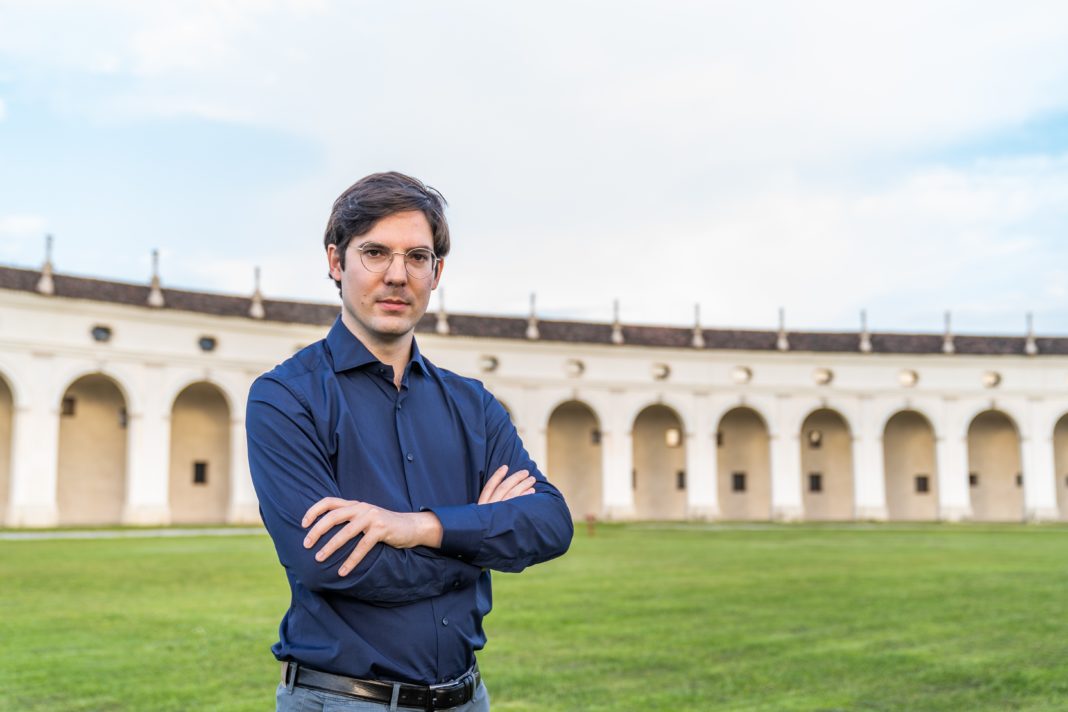I concerti dell’Acquario nel Museo Darwin- Dohrn. Domani mercoledì 3 aprile alle 20 l’associazione Maggio della Musica propone l’appuntamento con il pianista udinese (classe 1990) Sebastiano Mesaglio (foto) che eseguirà la Sonata n° 7 in Re Maggiore, op.10 n°3 di Ludwig Van Beethoven, il Capriccio in Mi minore op.47 n.1 di Muzio Clementi e Sette Fantasie per pianoforte op. 116 di Johannes Brahms.
La terza sonata dell’opera 10, pubblicata nel 1798, si differenzia dalle prime due per l’impostazione di “grande” Sonata da concerto, strutturata in quattro vasti movimenti. In questo senso, si tratta forse del risultato più maturo conseguito da Beethoven fino allora. Non manca tuttavia l’elemento “leggero” e scherzoso, evidente soprattutto nei due movimenti estremi.
Gli ultimi due Capricci Op 47 di Clementi sono ambiziosi, drammatici, spesso cromatici. A settant’anni, il compositore dimostra ancora un’ansia felice di sperimentazione. I Capricci comprendono due movimenti veloci, preceduti da un’ampia introduzione di Adagio che, con il suo elaborato ornamento melodico, quasi anticipa la scrittura di Chopin o del giovane Liszt.
Nel 1892 Brahms sottopose al giudizio dell’amica Clara Schumann le Fantasie op. 116 e gli Intermezzi op. 117. La grande pianista mostrò entusiasmo: «Grazie a questi brani – annotò – ho sentito di nuovo la mia anima attraversata dalla vita della musica. […]. I pezzi non sono difficili, tranne che per alcuni passaggi, ma richiedono una comprensione profonda; bisogna avere familiarità con Brahms per poterli suonare come lui li ha concepiti».
Darwin – Dohrn Museum / The Aquarium Concerts: The pianist Sebastiano Mesaglio will perform the Fantasies by Brahms
Aquarium Concerts in the Darwin-Dohrn Museum. Tomorrow, Wednesday, April 3rd, at 8 p.m., the Maggio della Musica Association is featuring Udine pianist Sebastiano Mesaglio (born in 1990, photo), who will perform Ludwig Van Beethoven’s Sonata No. 7 in D Major, Op. 10 No. 3, Muzio Clementi’s Capriccio in E minor, Op. 47 No. 1, and Seven Fantasies for Piano, Op. 116, by Johannes Brahms.
The third sonata in Opus 10, published in 1798, differs from the first two in its “grand” Concert Sonata setting, structured into four broad movements. In this sense, it is perhaps Beethoven’s most mature achievement up to that time. However, it does not lack the “light” and scherzo element, which is especially evident in the two extreme movements.
Clementi’s last two Caprices Op 47 are ambitious, dramatic, and often chromatic. At the age of seventy, the composer still demonstrates a happy eagerness to experiment. The Capricci comprise two fast movements, preceded by a broad Adagio introduction that, with its elaborate melodic ornamentation, almost anticipates the writing of Chopin or the young Liszt.
In 1892, Brahms submitted his Fantasies op. 116 and Intermezzi op. […].” 117 to his friend Clara Schumann’s judgment. The great pianist showed enthusiasm: “Thanks to these pieces,” she noted, “I felt my soul crossed again by the life of music. The pieces are not difficult, except for some passages, but they require deep understanding; one must be familiar with Brahms in order to play them as he conceived them.










